Makeup Tips After Rhinoplasty: Expert Guide
Sarah had her rhinoplasty three weeks ago. The swelling is finally starting to go down, but she’s got a big job interview next week and she’s worried about how to handle her makeup after rhinoplasty. Should she even wear makeup yet? Which products are safe? How can she cover up the remaining bruising and swelling without compromising her healing? These questions are exactly what many patients grapple with after rhinoplasty—and the answers aren’t always straightforward.
Makeup application after rhinoplasty requires a careful balance between looking your best and protecting your healing nose. The wrong products or techniques can irritate sensitive skin, introduce bacteria, or even interfere with your final results. But done correctly, the right makeup tips after rhinoplasty can boost your confidence during recovery while keeping your healing on track.
Quick Answer: You can typically start wearing makeup after rhinoplasty once your surgeon clears you (usually 1-2 weeks post-surgery). Use mineral-based, non-comedogenic products. Avoid applying makeup directly on incisions until fully healed. Use gentle application techniques, avoid heavy products on the nose area, and always remove makeup thoroughly. Choose products specifically designed for sensitive skin to minimize irritation during healing.
When Can You Start Wearing Makeup After Rhinoplasty?
Timing matters—a lot. Most surgeons will tell you to wait at least one to two weeks before applying any makeup, but here’s the thing: every patient’s healing timeline is different. Some people heal faster than others, have more swelling. Some have more bruising. The key is getting clearance from your surgeon first.
In my practice, I’ve observed that patients who rush into makeup too soon often end up dealing with irritation, clogged pores, or even infections around the incision sites. That’s what many patients find surprising—makeup can actually introduce bacteria to areas that are still healing. The nose, especially around the nostrils and bridge, is particularly vulnerable during those first few weeks.
Early Recovery Period (Days 1-7)
During the first week, forget about makeup entirely. Your nose is wrapped, there’s likely significant swelling, and your incisions are fresh. The focus should be on healing, not cosmetics. This is where things get interesting—some patients try to cover the surgical tape or splint with makeup, which is a definite no-go. The tape needs to stay clean and dry.
Instead, focus on what you can control: keeping the area clean, following your surgeon’s care instructions, and managing swelling with cold compresses (never directly on the nose with tape). Your skin will thank you later.
Makeup After Rhinoplasty: Transition Period (Weeks 2-4)
Around week two, if your surgeon gives the green light, you can start with very light, gentle makeup on areas away from your nose. Think under-eye concealer for those dark circles from bruising, or light foundation on your cheeks and forehead. But avoid the nose area itself—that’s still too sensitive.
Most people don’t realize that even gentle touching or pressure on the nose during this period can affect final results. The cartilage and bone are still settling, and any pressure—even from makeup application—could potentially shift things slightly. That’s why many surgeons recommend avoiding the nose area specifically until at least week three or four.
Safe Application Window (Weeks 4+)
By week four, you’re usually in a much safer zone for makeup tips after rhinoplasty. Swelling has typically reduced significantly, incisions are mostly healed, and you can start applying products more normally. But “normal” doesn’t mean “anything goes.” There are still guidelines to follow.
Makeup After Rhinoplasty: Choosing the Right Makeup Products
Not all makeup is created equal when it comes to post-surgical recovery. The products you use matter just as much as the timing. Here’s what to look for—and what to avoid.
Mineral-Based Foundations
Mineral makeup is your best friend during rhinoplasty recovery. Why? It’s typically non-comedogenic (won’t clog pores), contains fewer irritants, and often includes ingredients like zinc oxide that can actually help with healing. Brands like BareMinerals, Jane Iredale, or Physician’s Formula are popular choices among post-surgical patients.
These products also tend to be easier to remove, which matters because you’ll need to be extra gentle during makeup removal. The last thing you want is to scrub aggressively at healing skin.
Makeup After Rhinoplasty: Non-Comedogenic Formulas
Look for products labeled “non-comedogenic” or “oil-free,” especially for anything that will go near your nose. Comedogenic products can clog pores and lead to breakouts, which is the last thing you need when your skin is already stressed from surgery.
Clinicians report that patients who use heavy, pore-clogging foundations often experience more inflammation and slower healing. That’s not to say you can’t use any coverage—you just need to be selective.
Products to Avoid
Steer clear of anything with heavy fragrances, alcohol, or harsh chemicals. These can irritate sensitive, healing skin. Also avoid matte finishes that might be too drying, or anything that requires heavy setting powder—less is more during recovery.
Retinol-based products? Definitely skip those for now. They can thin the skin and cause irritation. Acid-based products (like those with glycolic acid) should also wait until your surgeon gives full clearance.
Application Techniques That Protect Your Healing Nose
How you apply makeup matters almost as much as what you use. The right techniques can help you look great without compromising your recovery.
Makeup After Rhinoplasty: Gentle Application Methods
Use a light touch—always. Instead of rubbing or buffing, try patting or stippling motions with a makeup sponge or brush. This reduces friction and pressure on the healing tissues. Many patients find that a damp beauty sponge works better than brushes during early recovery because it’s softer and less likely to tug at skin.
Start with less product than you think you need. You can always build coverage, but removing heavy makeup can be more problematic. The key point is: gentle application now means better results later.
Focusing on Surrounding Areas
Here’s a strategy many patients don’t think of: enhance the areas around your nose rather than trying to cover the nose itself. Well-done eye makeup, for instance, can draw attention upward and away from any residual swelling. A nice lip color can balance your features.
This approach works especially well during weeks 2-4 when you’re still avoiding direct nose application. You can look polished and put-together without touching the healing area at all.
Makeup After Rhinoplasty: Concealing Bruising and Swelling
When you do start applying makeup to the nose area (with your surgeon’s approval), color correction is your friend. Yellow-tinted concealer can neutralize purple bruises, while green-tinted concealer can help with redness. Apply these sparingly, then layer with your regular foundation.
But remember: you’re not trying to achieve perfect coverage. Some swelling and discoloration is normal and expected. Attempting to fully conceal everything can lead to over-application, which increases the risk of irritation or clogged pores.
Makeup After Rhinoplasty: Special Considerations for Different Recovery Stages
Your makeup routine should evolve as you heal. What works at week two won’t necessarily be what you need at week eight.
Managing Swelling Through Makeup
Swelling can make your nose look larger than it will eventually be. This is often overlooked by patients, but it’s important to understand: your final results won’t be visible until swelling fully subsides (which can take months). Makeup can help create balance, but it won’t hide significant swelling—and that’s okay.
Contouring can help create the illusion of a more defined nose, but use it sparingly. Heavy contouring on a healing nose can look unnatural and might irritate the skin. Light, subtle shading is usually more effective and safer.
Makeup After Rhinoplasty: Dealing with Dry Skin
Post-surgical skin can be dry and flaky, especially around incisions. This is where makeup can actually become problematic if you’re not careful. Heavy foundation on dry, flaky skin will look cakey and can emphasize texture rather than concealing it.
Before applying makeup, use a gentle, hydrating moisturizer (approved by your surgeon). Let it absorb fully. Then apply a primer if needed, followed by light makeup. This helps create a smoother canvas and prevents makeup from settling into dry patches.
Handling Incision Sites
If you have external incisions (like at the base of the nose or along the columella), avoid applying makeup directly on them until they’re completely healed. This typically means waiting until the scabs have fallen off naturally and the skin looks fully closed.
For internal incisions, you have more flexibility, but you still need to be cautious. Any makeup that enters the nostrils could potentially cause irritation or infection. When in doubt, skip the nose area entirely.
Makeup Removal: Just as Important as Application
This aspect is often overlooked, but proper makeup removal is crucial during recovery. Aggressive scrubbing can damage healing tissues, but leaving makeup on can clog pores and cause breakouts.
Gentle Removal Techniques
Use a gentle, fragrance-free makeup remover. Micellar water is often a good choice because it’s effective but doesn’t require much rubbing. Oil-based removers can work well too, as long as they’re gentle and you follow up with a mild cleanser.
Pat gently with a soft cloth or cotton pad—never scrub. If makeup doesn’t come off easily, don’t force it. Instead, let the remover sit for a moment, then gently pat again. Multiple gentle passes are better than one aggressive scrub.
Cleansing After Removal
After removing makeup, cleanse your face with a gentle, surgeon-approved cleanser. This ensures all residue is gone and your pores stay clear. Avoid anything with exfoliants or harsh ingredients during this period.
Long-Term Makeup Considerations
As your nose continues to heal over the coming months, your makeup routine will gradually return to normal. But even once you’re fully healed, some patients find that their skin sensitivity has changed, or that certain products that worked before don’t work as well now.
This is normal. Your skin has gone through a significant change, and it may take time to adjust. Be patient with the process and listen to what your skin needs.
Common Mistakes to Avoid
Let me explain what not to do—because I’ve seen these mistakes time and again in my practice.
- Rushing into makeup too soon: Wait for your surgeon’s clearance, even if you’re feeling impatient.
- Using old makeup brushes or sponges: Make sure your tools are clean to avoid introducing bacteria.
- Sharing makeup: Never share products during recovery—your immune system is already working hard.
- Applying makeup to open wounds: This should be obvious, but it’s worth stating clearly.
- Using expired products: Old makeup can harbor bacteria. If in doubt, replace it.
- Over-contouring: Trying to “fix” your nose shape with makeup can look unnatural and irritate healing skin.
Professional Resources and Support
If you’re unsure about anything related to makeup tips after rhinoplasty, consult your surgeon or their team. They know your specific case and can provide personalized guidance. Many practices also have estheticians or makeup artists they can recommend who specialize in post-surgical beauty.
Proper post-operative care, including cosmetic product selection, plays a significant role in recovery outcomes. They recommend consulting with your surgeon before introducing any new products to your routine.
Proper wound care and avoiding irritants during early healing phases can significantly impact scar formation and final aesthetic results.
Final Thoughts
Recovery after rhinoplasty is a journey, and your makeup routine is just one small part of it. The most important thing is protecting your healing nose and following your surgeon’s guidance. Makeup tips after rhinoplasty can help you feel more confident during recovery, but they should never compromise your healing.
Remember: your final results are worth the wait. Temporary swelling, bruising, and the need to be careful with makeup are all short-term concerns in the context of a lifetime of improved confidence and satisfaction with your appearance.
Be patient with yourself and your healing process. Choose products carefully, apply them gently, and always prioritize your recovery over perfect coverage. When in doubt, consult your surgeon—they’re your best resource for personalized guidance on makeup tips after rhinoplasty that work for your specific situation.



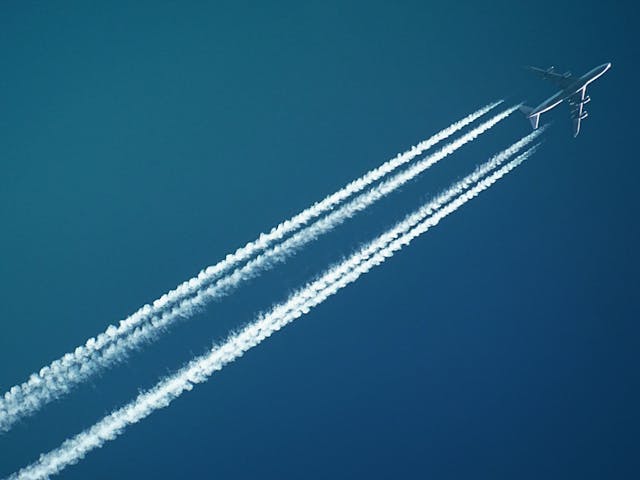



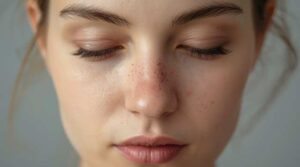

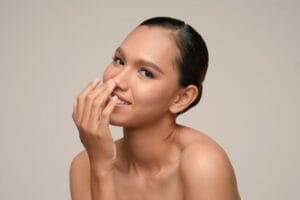

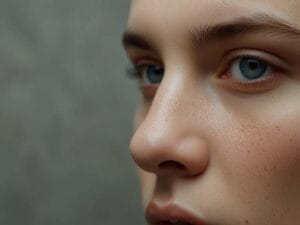

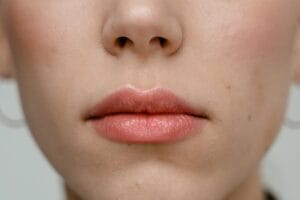
Post Comment